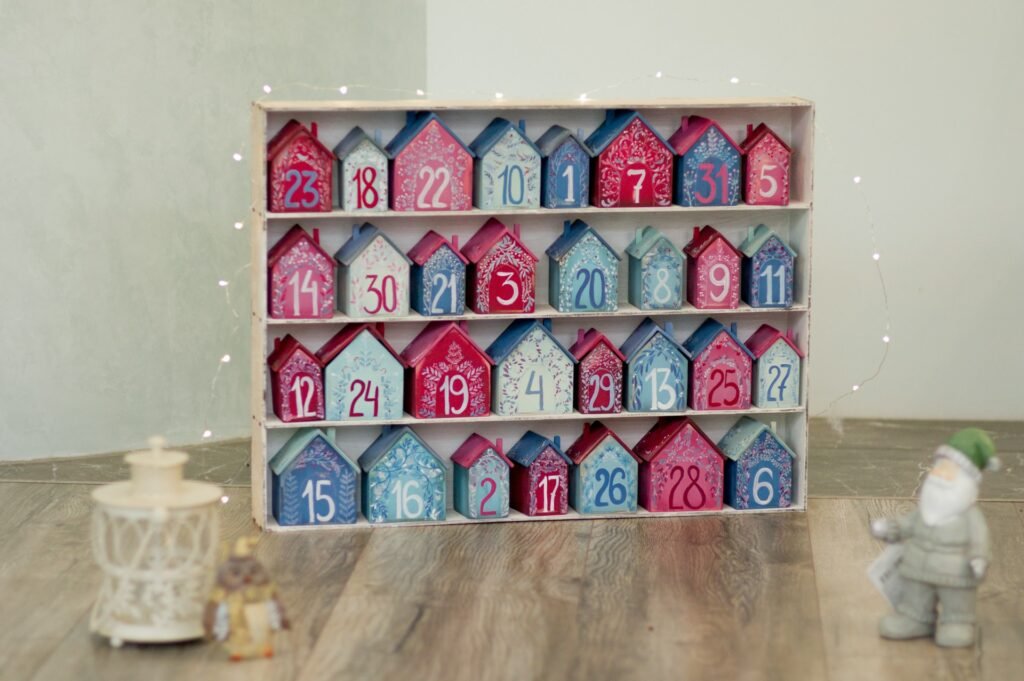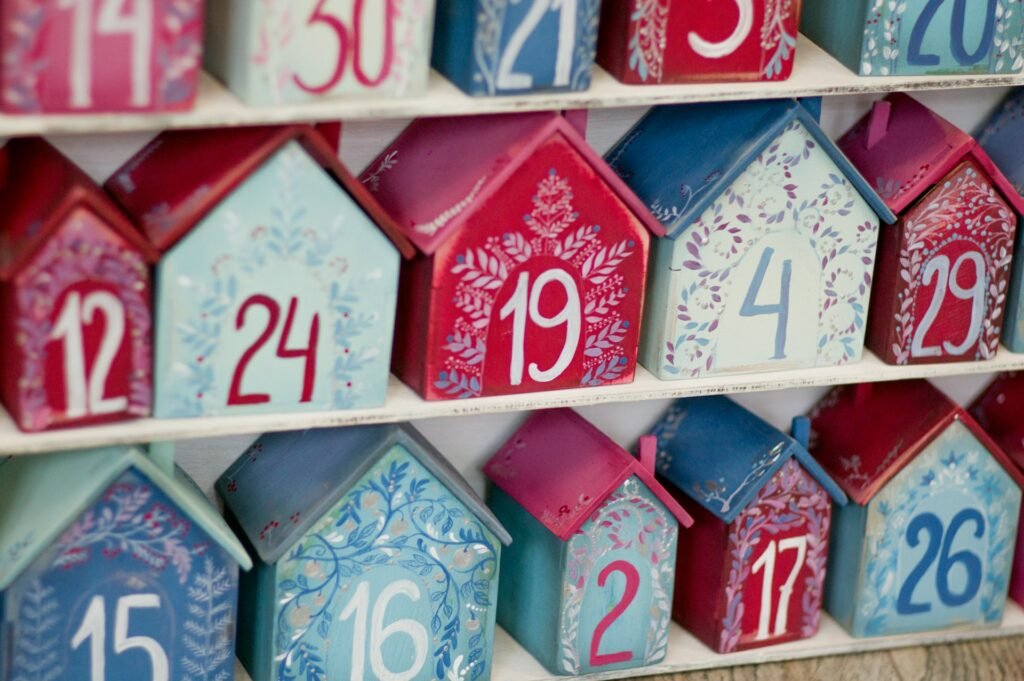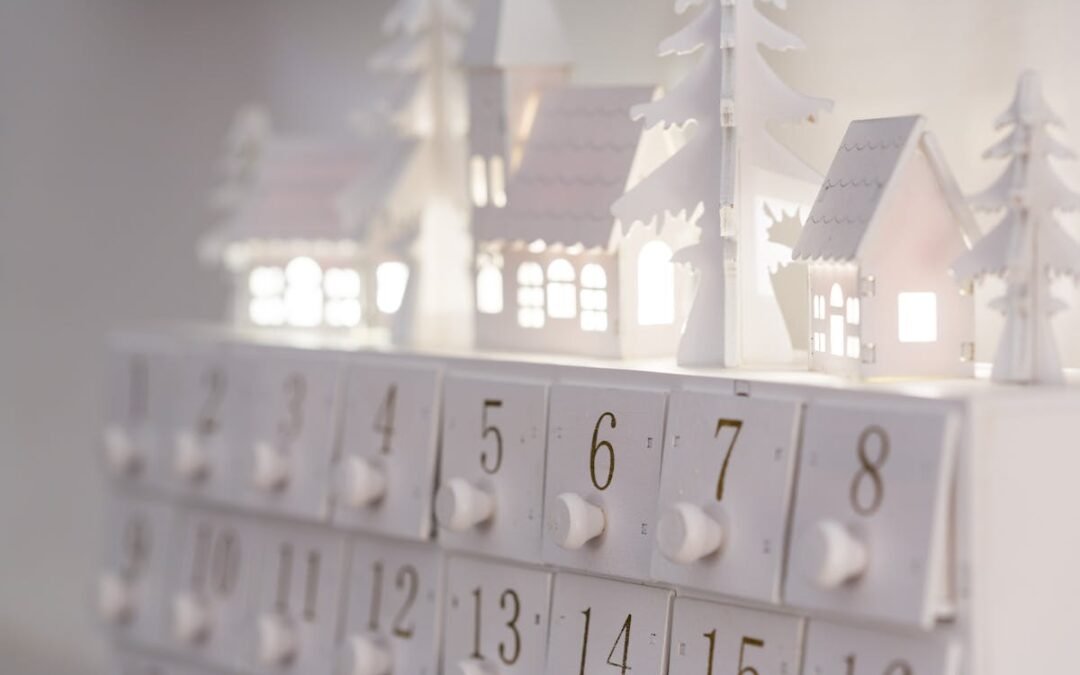Before the arrival of the winter holidays, the Advent calendar season has already started. For several years now, many people, particularly Americans, have been celebrating the 24 days before Christmas with their very own countdown calendars. These calendars often feature drawers or little doors hiding small treats, typically chocolates, toys, or Bible verses.
However, over the years, companies have become more creative, offering a wide range of Advent goodies to choose from. Options now include coffee, cheese, gemstones, hair products, tea bags, candles, hot sauce, skincare, socks, pet treats, jewelry, beef jerky, jam, makeup, wine, and more.
Additionally, there are virtual calendars containing songs, games, and new riddles each day. You can even showcase your creativity by creating your own virtual calendar with messages, videos, and pictures.
Some companies are even producing “Hanukkah calendars” featuring one treat for each night of the holiday. Treats may include hair products, toys, nail polish, chocolates, and others. Some brands release their calendars even when it’s still far from December.
These Calendars Originally Started in Germany

The tradition of Advent calendars traces back to the fourth century when the season of Advent was first celebrated by Christian churches. Beginning on the Sunday nearest to the feast day of St. Andrew the Apostle, Advent spans the subsequent three Sundays, totaling a four-week celebration.
Scholars note that this period initially commemorated the baptism of new Christians, coinciding with the January Feast of Epiphany. The term “advent” is derived from the Latin word “adventus,” meaning “arrival,” later associated with the arrival of Christ. During the Middle Ages, Advent became linked with Christmas.
Today, most Advent calendars commence on December 1st and conclude either on Christmas Day or Christmas Eve. This adaptation serves a practical purpose, as the length of the Advent season varies each year. By standardizing the calendar to December, it simplifies production and use, allowing for consistent numbering of days that can be easily replicated annually.
The history of Advent calendars dates back to the 19th century when German Protestants sought creative ways to mark the days leading up to Christmas. Practices included placing straws or lighting candles in a Nativity crib, or marking doors and walls with chalk.
Some families displayed a devotional image on their walls each day. The first wooden Advent calendar was handcrafted in 1851, paving the way for subsequent innovations such as “Christmas candles” and “Christmas clocks.”
After World War II, Advent Calendars Reached the United States

The printed Advent calendar owes its invention to German publisher Gerhard Lang, whose childhood memory of his mother sewing 24 cookies into a box cover inspired him. On each day of Advent, his mother allowed him to eat one.
In the early 1900s, Lang collaborated with illustrator Ernst Kepler to create the first commercial Advent calendar. Over time, their innovation evolved, and by the 1920s, they introduced calendars with doors. Other publishers soon followed suit, leading to high demand for Advent calendars in Germany by the 1930s.
However, World War II brought disruptions. Paper rationing led the Nazi Party to halt printed calendar production. In an attempt to revive the Christmas spirit, the Third Reich produced its own Advent calendars featuring swastikas and other symbols, which were distributed to mothers and children.
As the war ended, people eagerly anticipated a return to normalcy. Businesses with the capacity resumed printing Christmas Advent calendars, which also made a comeback in the United States and Europe.
The calendars gained significant popularity when President Dwight Eisenhower was photographed opening one with his grandchildren, an image published in national newspapers in 1953. Nonetheless, it would take several more years and changes before Advent calendars reached their current form.
In the 1950s, the original chocolate-filled Advent calendars were introduced. Cadbury began producing them commercially in 1971. However, they didn’t gain immediate popularity; it took another two decades before the company began producing them continuously. From there, their popularity soared, and the rest is history.
Advent Calendars: Popular Among Shoppers and Retailers

In recent times, various retailers, ranging from department stores to supermarkets, have been creating and selling more Advent calendars than ever before.
Although these calendars come in various sizes and styles, their goal remains the same: to offer the gift of time and encourage us to slow down. This concept harks back to the late 19th century when Advent calendars were first introduced as a method of marking the remaining days until Christmas.
It has been reported that many people not only display their Advent calendars all month but also enjoy sharing them on social media. Furthermore, these calendars serve as an excellent way for companies to provide samples to their customers, particularly those who are considering purchasing more of their products.
This is especially crucial during challenging economic times when inflation is high. Introducing new products can be daunting when the economy is struggling, as companies may hesitate to invest heavily in products that might not be well-received.
Who Can Use the Advent Calendar?

Just like any other gift, ensure that the person you give the Advent calendar to will appreciate it and that it is appropriate for them. For example, some Advent calendars may contain small gifts that could pose choking hazards to small children and toddlers.
If you’re giving one to a traditionalist, opt for a paper calendar with an image of the Nativity, which they can easily hang on the wall. If you choose a candy-filled Advent calendar, be sure to check for any allergies in advance.
Some Advent calendars are designed to stand on their own, while others must be leaned against or hung on the wall. Before giving an Advent calendar, consider whether the recipient will enjoy using it as a place for small holiday gifts or as a piece of decor.
How Many Days Does an Advent Calendar Have?

Many people wonder if an advent calendar has 12 or 24 days. Generally, the Advent season begins four weeks prior to Christmas, with the fourth Sunday before Christmas marking its start.
This means that the beginning of the Advent season can vary from year to year. However, Advent calendars typically start on December 1st. Traditionally, the final door of the Advent calendar is opened on December 24th, the day before Christmas.
Nevertheless, some Advent calendars only include 12 days due to the nature of the items hidden inside. If you prefer to celebrate for 24 days but have a 12-day Advent calendar, you might consider purchasing two calendars.
Classic Advents offers Advent calendars and more. For more information about our products, call us at 208-293-7592 or send us an email at classicadvents@gmail.com.
